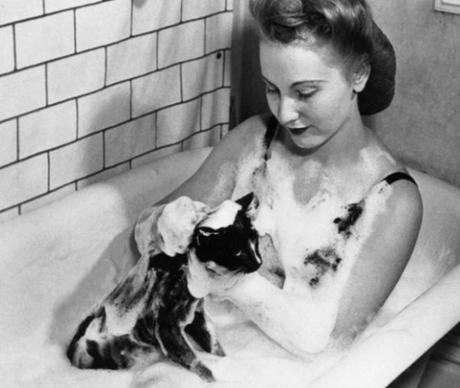If you’ve ever tried to bathe a cat, you know it can feel like trying to perform a magic trick—one wrong move, and everything descends into chaos. Cats are famously independent and fastidious creatures, often handling their own grooming with meticulous care. But sometimes, whether due to an adventurous roll in something unsavoury or a stubborn flea infestation, a bath becomes unavoidable. The thought of coaxing your feline friend into water might seem daunting, but it doesn’t have to be a battle. With the right approach, you can turn bath time from a stressful ordeal into a manageable task. In this guide, we’ll share 10 tips to help make bathing your cat purrfectly simple, keeping both you and your cat calm and collected.

Tip 1: Prepare the Environment
Before you even think about getting your cat wet, it’s crucial to prepare the environment. Choose a quiet, comfortable space where your cat feels safe—usually, a bathroom or kitchen sink works well. Gather all necessary supplies in advance, including towels, cat-specific shampoo, a jug or detachable shower head, and a non-slip mat. Ensure the water is lukewarm, as cats are sensitive to temperature extremes. Having everything ready will help the process go smoothly without any last-minute scrambles.

Tip 2: Brush Your Cat Before Bathing
A thorough brushing before the bath serves two purposes: it removes tangles and loose fur, making the bathing process easier, and it reduces the amount of fur that might clog your drain. This step is especially important for long-haired cats, as their fur can become matted when wet. A pre-bath brush also helps your cat relax and prepares them for the bath ahead.

Tip 3: Trim Your Cat’s Nails
Cats can become anxious during baths, and even the most docile feline might lash out when feeling stressed. To protect yourself from scratches, it’s wise to trim your cat’s nails before the bath. If you’re not confident in trimming your cat’s nails, ask your vet or a professional groomer for help. Trimming nails beforehand can make the experience safer for both of you.

Tip 4: Use the Right Shampoo
Choosing the correct shampoo is essential. Never use human shampoo, as it can irritate your cat’s sensitive skin. Instead, opt for a shampoo specifically designed for cats. There are many options available, including formulas for sensitive skin, flea treatment, and hypoallergenic options. If your cat has any specific skin conditions, consult your vet to find the most suitable product.

Tip 5: Gradual Introduction to Water
One of the biggest challenges is getting your cat accustomed to water. Start by gently wetting their paws to introduce them to the sensation. Gradually work your way up to wetting their body, being careful to avoid the head initially. This gradual introduction helps reduce anxiety and allows your cat to get used to the process without feeling overwhelmed.

Tip 6: Keep It Short and Sweet
Once you begin the actual bathing, aim to keep it short and efficient. Cats can become stressed if exposed to water for too long, so it’s important to wet, lather, and rinse as quickly as possible. Focus on the areas that need the most attention, such as the belly, legs, and tail. A swift bath is less traumatic for your cat and makes the entire experience more bearable.

Tip 7: Protect the Ears and Eyes
Cats are sensitive to water in their ears and eyes, so take precautions to protect these areas. Use a damp cloth to gently clean your cat’s face, avoiding direct water contact. If you’re particularly concerned about water getting into their ears, you can place cotton balls inside, but be sure to remove them afterwards. Keeping your cat’s head dry and safe will make the bath much less stressful for them.

Tip 8: Rinse Thoroughly
Rinsing is a critical step to ensure no shampoo residue is left on your cat’s skin, which could cause irritation. Use clean, lukewarm water to rinse your cat thoroughly, checking under the legs, around the tail, and in any folds of skin. Make sure all shampoo is washed away before you finish the bath to keep your cat’s skin healthy.

Tip 9: Towel Dry Your Cat
After the bath, gently wrap your cat in a large, soft towel and blot (rather than rub) to remove excess water. Rubbing can cause tangles and further stress your cat. If your cat is particularly wet, you may need a second towel. Some cats may tolerate a hair dryer on a low, cool setting, but many will prefer to air dry. Ensure they are in a warm, draught-free room until completely dry.

Tip 10: Reward and Comfort
Once the ordeal is over, it’s important to reward your cat with treats and plenty of praise. This positive reinforcement helps to create a more positive association with the bathing experience. Allow your cat to relax in a quiet space where they can groom themselves and recover from the stress. Over time, these rewards will help make future baths easier.
Bathing your cat doesn’t have to be a nightmare. With proper preparation and a gentle, patient approach, you can make the process much easier for both you and your feline companion. Remember, every cat is different—what works for one might not work for another, so be patient and adjust your methods as needed. Have you tried these tips? Share your own cat bathing experiences in the comments below!

